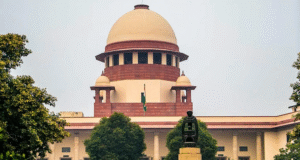Heavy downpours have once again brought Bengaluru to a standstill, with normal life thrown into disarray on Tuesday. Streets were flooded, and residents were seen wading through knee-deep water as massive traffic snarls crippled the city. The impact of the rains has been severe across Karnataka, with the official death toll rising to five.
A particularly affected area was the stretch between Silk Board and Rupena Agrahara on Hosur Road, which was completely closed due to flooding, causing substantial traffic delays. In response to the situation, several companies have asked employees to work from home.
Social media platforms were flooded not just with images of the waterlogged streets, but with anger and frustration as users pointed fingers at the so-called “real estate mafia.” Many claimed that unchecked urbanisation, encroachment on lakebeds, and the destruction of stormwater drains—with the backing of politicians—were to blame for the city’s vulnerability during heavy rains.
One user wrote, “Real estate mafia has ruined Bengaluru. All the politicians and businessmen involved in swallowing lakes, lakebeds, and rainwater drains will and must rot in hell. If there is any truth in Karma theory, these guys should face it. Extremely painful to see my Bengaluru like this.”
Others pointed out the cyclical nature of this realisation, saying that outrage only surfaces during extreme rainfall and is quickly forgotten. A resident noted, “Bengaluru rains expose the ugly truth: lakebeds, drains, and stormwater paths swallowed by the real estate mafia with full political support. No city planning, no accountability. Now the city drowns in its own greed.”
The debate took a controversial turn as some blamed interstate migration for exacerbating the problem, suggesting that migrants contributed to the real estate boom that led to the destruction of natural water bodies. However, others countered that it was unfair to solely blame migrants and emphasized that local politicians and corrupt land deals were at the root of the issue.
One citizen stated, “Don’t blame only the migrants. The land mafia must have good rapport with local politicians to grab lands. Karnataka politicians who have grown rich on illegal mining, land grab, and pond grab are all responsible for Bengaluru’s mess. The migrants are yet to be politically strong.”
The administrative chaos in Bengaluru also came under scrutiny. With no elected representatives in the Bruhat Bengaluru Mahanagara Palike (BBMP), users pointed out the lack of accountability and coordination among civic departments. A frustrated resident commented, “The only priority that politicians have is to develop real estate which they have interest in. No accountability in BBMP. No proactive measures to prepare for the monsoon. At the end of the day, citizens have to bear the brunt of this, despite it not being their fault.”
Deputy Chief Minister DK Shivakumar, who had promised a better Bengaluru during his campaign, was directly blamed by some for the current crisis.
Meanwhile, the India Meteorological Department (IMD) has recorded 105 mm of rainfall between Sunday night and Monday morning, with 30 mm in the past 24 hours. An orange alert has been issued, forecasting rainfall of up to 20 cm. Other areas in Karnataka, such as Mangaluru, have also been affected, receiving 90 mm of rainfall recently.
As the rain continues to fall, so does the patience of Bengaluru’s citizens—who now find themselves drowning not just in floodwater, but in years of unplanned growth, corruption, and neglect.







